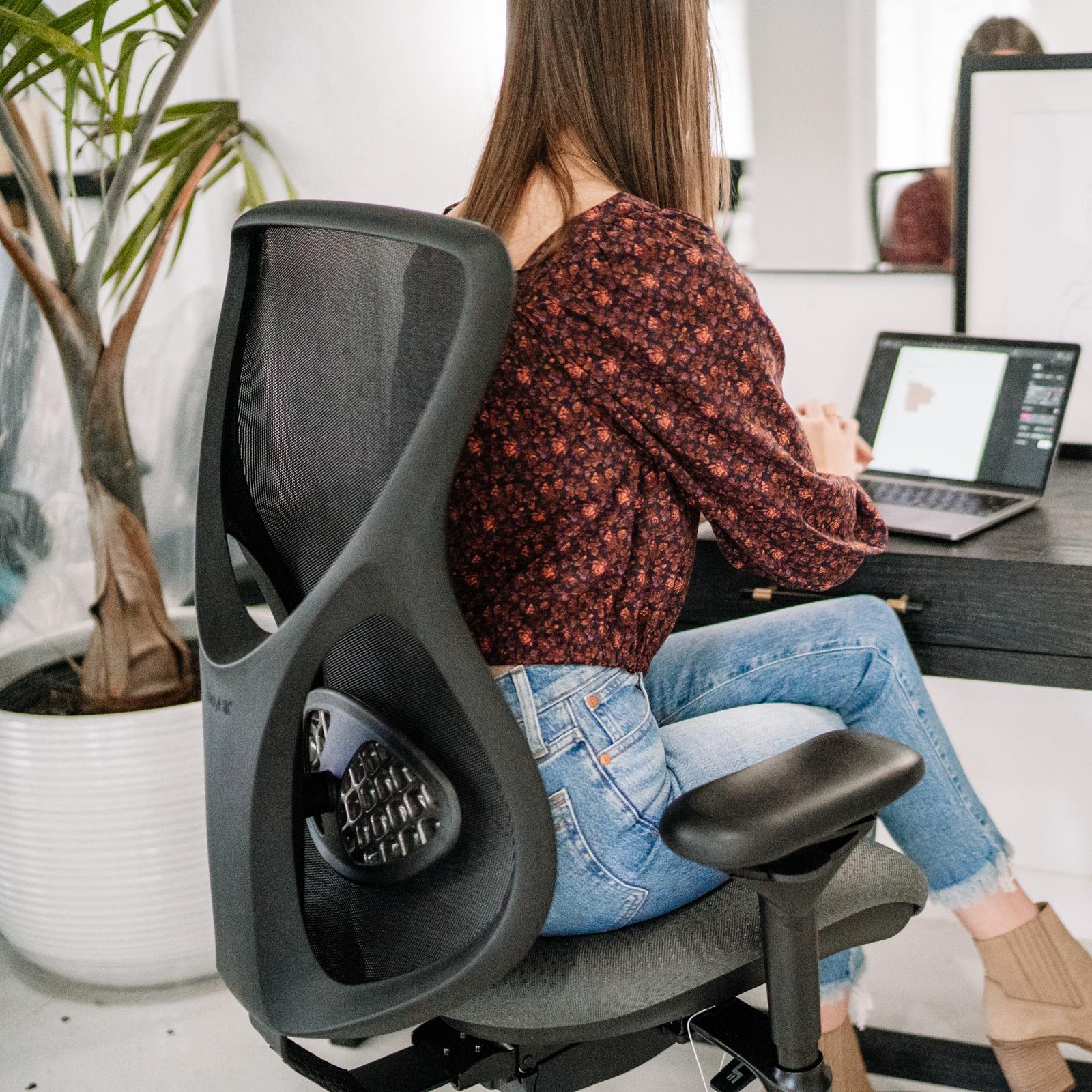Perhaps you have heard the word “ergonomics” thrown around in discussions about ergonomic furniture and…

How to Choose the Right Ergonomic Office Chair for Your Needs
When looking to choose the right ergonomic office chair that suits your needs, it is essential to make sure you will be able to maintain proper posture and work comfortably for long hours.
Ergonomic office chairs are usually the perfect addition to the rest of your ergonomic office furniture, as they are the centerpiece of any ergonomic office setup.
Below are some tips to help you choose the right ergonomic office chair for your home, office, and anywhere else in no particular order:
- Adjustability: One of the most important factors to consider when choosing ergonomic office chairs is the adjustability factor. You should be able to adjust any ergonomic chair to fit your needs. The best ergonomic office chairs allow you to adjust seat height, tilt, lumbar support, and armrest position.
- Lumbar Support: Proper lumbar support essentially means how well a furniture or comfort item supports the curved lower portion of your spine. Lumbar support is among the top two reasons to consider ergonomic office chairs. The best office chair for back pain provides incredible lumbar support. The goal is to ensure your chair has a lumbar adjustment to support your lower back’s natural curvature.
- Seat Height: Most ergonomic office furniture has an adjustable seat height to suit your needs, and the same thing goes for a bariatric office chair, a tall ergonomic office chair, and other ergonomic office chairs. Not every big, tall office chair has adjustable features, which can affect your comfort while working; 16 to 21 inches is ideal for most people.
- Seat Depth and Width: The standard width for ergonomic office chairs is around 17 to 20 inches. You typically want an ergonomic desk chair that allows you to sit comfortably with your back against the backrest, leaving about two to four inches of space between the back of your knee and the edge of the seat.
- Backrest Design: A proper backrest design supports the lumbar region effectively while being about 12 to 19 inches wide. A good ergonomic office chair should have an adjustable backrest to fit the appropriate angle that your back curves at.
A well-designed ergonomic chair is the best office chair for back pain and a great complementary addition to your existing ergonomic furniture. It is important to note that not all big and tall office chairs are ergonomic office chairs. Some big and tall office chairs are simply lookalikes of those with proper ergonomics.
FAQs
What is the best office chair for sitting for long hours?
The best office chair for sitting for long hours is an ergonomic chair that offers good adjustability, lumbar support, adjustable seat height, proper seat depth and width, and a good backrest design.
The Next24 3500 Chair qualifies as an excellent bariatric office chair or a tall ergonomic office chair for long hours.
How long should I sit in an ergonomic office chair at a time?
Ideally, the whole point of having ergonomic features paired with big and tall office desk chairs is so that you can sit at your desk for long hours at a time. However, to make sure that you have lesser risks of back pain and maintain good posture, it is recommended that you move from your desk every 20-30 minutes, even if this means standing for a few seconds and only pacing to and from your desk a few times.
What can you adjust in an ergonomic office chair?
You can typically adjust the chair height, tilt angle, armrest height, and headrest angle (in some).
It is recommended that you adjust the height and tilt of your desk chair until it fits well with the hollow section of your lower back.


